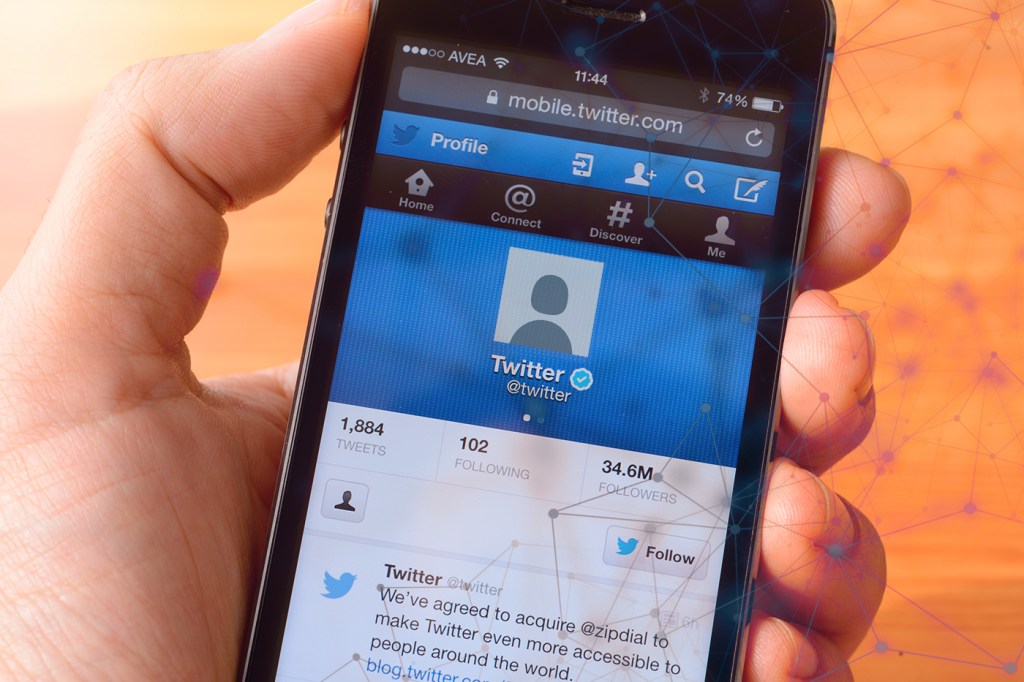Using design to perform ‘non-invasive brain surgery’

Earlier this year, Twitter changed its default avatar from an egg to a human silhouette in an effort to curb harassment on the social media platform. Twitter officials hope the new avatar’s impact will be two-fold, encouraging new users to upload photos of themselves while also removing the association between the egg and bully accounts.

While subtle shifts in design can impact human thought and behavior—something Northeastern University design professor Nathan Felde calls “non-invasive brain surgery”—the success of this new avatar, he says, will rely largely on whether humans can learn to pause and consider their online actions.
We asked the Felde to discuss the link between design and behavior.
From a design perspective, what do you think of Twitter’s new default avatar?
Years ago, a Dutch newspaper changed its typeface and was rewarded by a public outcry of protest and complaints that it was illegible and made reading difficult. After some time passed, another change was instituted, this time back to the previous typeface. Again, the subscribers protested.
People fear change, but hate boredom. Somewhere in the middle ground we find solutions that satisfy or at least pacify most people. The rate of change is increasing in some aspects of life and people now accept shorter cycles of change and revision. Those experiments are becoming more numerous and more frequent. As change becomes a constant we learn another way of addressing the uncertainty it poses. Design thinking, as a popular pastime, gives people an alternative to “fight or flight” responses. Design offers a third way. Thinking like designers is an intelligent response to uncertainty, ambiguity, and change.
Do you think it will curb harassment online?
I don’t think I can predict the outcome so soon, as it is a speculation on Twitter’s part to alter the logo. I am certain that form affects belief and potentially behavior. But it affects behavior most directly when it is physical material form.
The internet originated as a “commons” or “common carrier” thought of much like a common ground, when in fact it is a consensual infrastructure. The agreement that holds it together is a covenant that “if you respect (or, carry) my traffic, I will respect (or, carry) yours.” That common ground is threatened by any asymmetry in power beyond that consensual compact. But there is a difference between power within a common ground, and establishing or empowering a common etiquette.
Harassment will diminish with the development of a new form of governance and regulation that ensures parity, equity, and reciprocity in all exchanges. Humans being humans is a revelation that is unfolding before our eyes, as we monitor and measure more of humanity with more comprehensive sensors. Trauma will occur naturally. How we react to trauma is a skill that might be developed and improved—learning to pause, as a component of etiquette, seems common sense, but an AI-generated reminder might make that etiquette more prevalent among people who invest most of their attention in cyberspace without realizing their inherent interdependence. Therein awaits the solution to the danger that we present to each other.
How can design change human behavior?
One view is that behavior is what we do to maintain perception. So that would suggest that, however the world is formed and constructed, it is attention that connects our belief to behavior.
If I can make changes to form that get, keep, and use your attention, I am already affecting your behavior. But the content in or significance of form is what might induce you to change your belief and consequently your behavior. Sometimes believing is seeing. What we think we see may not be what is actually there. Cognitive processes can be subliminal and unconscious.
People operate by negotiating their obligations. Those negotiations can be internal, as in changing the order of the mental to-do list you created in the morning. They can be external, as in deciding with others what is now a new or more urgent priority. If I can change your obligations, I can change your behavior—and with repetitive success—change your habits.
What design elements—if any—tend to engender positive human behavior?
We have to be clear about what we mean by positive. If something is designed to help you achieve a personal goal, then you can benefit from its design. Any object that eases resistance, or relieves uncertainty, or removes obstacles from your path toward your intentions can be seen as engendering positive human behavior for the person with those intentions. If our collective intentions are in conflict, then things can be designed to reveal, mediate, or resolve those conflicts. A door can resolve some conflicting goals of letting people in and out of buildings versus maintaining a regulated indoor temperature, by revolving. But the people using the revolving door have to agree on how to use it. A design that indicates which way the door revolves relieves that uncertainty. A design that proposes that the door maintain movement in one direction resolves that matter clearly.
If we are referring to design as a means to offer persuasive messages, then we are considering more than just the legibility and logic of a design, but also the power of its rhetoric. This requires an understanding of persuasion. Designers rely on a practice I call empirical psychology to achieve what I call non-invasive brain surgery. We invent artifacts, deploy conditions, and implement situations that affect humans through alterations of form, within the physics of everyday life. Operating on someone’s perception is virtual neurosurgery.
Designers are brought in to play their role when people do not know what to do. Professional designers are creative problem solvers. They investigate pathways to the human mind that offer new behavioral choices or arguments.
Are there any examples of this type of design online?
In some sense, every blandishment of the web today is an attempt to persuade you of something, if only to give each thing in it your attention, in competition with all other things. Designers who succeed are the empirical ones who make the fastest adjustment to immediate feedback loops from the operators of the web, who just happen to be everyone who uses it.
We naturally seek to understand the significance of all forms. Our attempts to understand the world mediated by the digital network are monitored closely to deduce our next choice from the evidence of our preceding choices. This is where the network becomes a means to reflexive design.





